The power of new-style peasant organizations
From the rice fields in the Long Xuyen Quadrangle to the shrimp-rice and shrimp-pineapple rotation in the Upper U Minh region, it is easy to see the new vitality of the cooperative economy in rural An Giang today. The large-scale production movement, chain linkage and cooperative spirit are spreading in each cooperative and cooperative group.

Deputy Minister of Agriculture and Environment Tran Thanh Nam (third from right) and delegates visit the high-quality, low-emission rice field at Phu Hoa Youth Agricultural Service Cooperative. Photo: Trung Chanh.
Located in the Long Xuyen Quadrangle, Tan Hoi is a purely agricultural commune that is leading the way in transforming the development model of "green agriculture , sustainable cooperation". The total production value of the commune at the end of the 2020 - 2025 term is estimated at 4,100 billion VND, of which the value of agricultural - forestry - fishery production increased by nearly 14%, reaching 3,125 billion VND.
Tan Hoi is not only strong in output but also stands out in its modern agricultural infrastructure system: closed dikes, electricity, pumping stations, and intra-field canals are invested synchronously, ensuring stable production of 2-3 rice crops/year.
Dozens of models applying science and technology, from sowing by airplane, alternating flooding and drying, rice cultivation to reduce emissions to electronic diaries... have been widely deployed. Thanks to that, the average income per capita in the commune has increased sharply, currently reaching more than 66.5 million VND/person/year, showing the resilience of organized cooperative production.
The highlight is the development of 17 agricultural cooperatives, each unit is a link in the value chain. From linking production, consuming rice, vegetables to processing agricultural products, cooperatives are gradually innovating their methods of operation, connecting with businesses, expanding production scale. The "4-house" connection: farmers, businesses, scientists, and the State is operated more practically than ever.
Phu Hoa Youth Agricultural Service Cooperative is a typical example of a new cooperative model. With the dynamism and creativity of youth, Mr. Nguyen Van Huynh, Director of the Cooperative, said that the Cooperative was established in 2011, initially with only 13 members, and has now increased to 320 members with 613 hectares of production land.

Farmers in Vinh Binh commune join hands to develop the giant freshwater prawn value chain from the shrimp-rice model. Photo: Trung Chanh.
The cooperative effectively performs service stages, helping members reduce production costs. Training, guiding, and supporting members in agricultural production towards commodities, improving product quality, applying science and technology, high technology, and stably linking inputs and outputs in production.
“The cooperative needs to continue developing sustainable services, prioritizing the development of high-quality rice, reducing emissions, implementing digital transformation, expanding supply-demand connections, product consumption and trade promotion,” Mr. Huynh shared about the development orientation.
Downstream, Vinh Binh commune (An Giang province) is a model of a multi-ecological agricultural area, where farmers grow rice, raise shrimp, develop vegetables and specialty pineapples. Here, agricultural production is restructured, combining the application of technical advances with ecological environment protection. Many models such as shrimp - rice, rice - color, intercropping shrimp (black tiger shrimp - whiteleg shrimp - green crab) have affirmed their sustainable effectiveness, increasing income, improving soil, saving water and reducing emissions.

Thanh Thanh Agricultural Service Cooperative links to develop shrimp value chain, turning dried shrimp into OCOP products, opening up a way to enrich farmers in Vinh Binh commune. Photo: Trung Chanh.
In particular, Ba Dinh pineapple - a recognized collective brand, has become the pride of local people. Along with 6 3-star OCOP products such as dried banana, dried shrimp, dried snakehead fish, snakehead fish, melon and fresh frozen goby fish, Vinh Binh has affirmed the role of the cooperative in bringing local specialties into the province's commodity value chain.
Both Tan Hoi and Vinh Binh communes have one thing in common: cooperative economy is becoming the core of advanced new rural development, where people no longer produce individually but share resources, knowledge and markets.
Farmers are no longer alone
Across the province, An Giang is affirming its pioneering role in developing cooperative economy, especially in the agricultural sector. By mid-2025, the province has 690 agricultural cooperatives, including 533 crop cooperatives, 120 aquaculture cooperatives, 10 livestock cooperatives and 27 general service cooperatives with a total charter capital of over VND660 billion and over 43,000 members.

An Giang province currently has nearly 600 OCOP products, most of which are cooperatives. Photo: Trung Chanh.
In addition, the province also has 5 cooperative unions with 53 member cooperatives and 3,552 cooperative groups operating effectively, managing more than 94,000 hectares of cultivation. This is the foundation network, identified as the "backbone" in implementing the Project on sustainable development of 1 million hectares of high-quality, low-emission rice cultivation associated with green growth in the Mekong Delta region that the province is implementing.
From that network, a series of typical linkage models were born: My An GlobalGAP Agricultural Cooperative cooperated with Antesco Company to produce and consume young corn for export; Cu Lao Gieng GAP Cooperative organized a mango export chain to the US, Australia, and South Korea with products having international growing area codes; Duong Go Lo Agricultural Cooperative (Giong Rieng commune) participated in the 1 million hectare rice project, auctioned rice, controlled quality according to low emission standards...
Along with that are 581 OCOP products with 3 stars or more, including 14 5-star products, 52 4-star products and the Phu Quoc fish sauce symbol - the first geographical indication of Vietnam to be protected in Europe. These numbers not only demonstrate the creativity of farmers but also affirm the government's support in developing cooperative economy.

An Giang builds a chain linking enterprises - cooperatives - farmers, creating new growth momentum. Photo: Trung Chanh.
According to the Department of Agriculture and Environment of An Giang province, this success comes from the concretization of the Central resolutions, especially Resolution 20-NQ/TW on collective economic development, Resolution 19-NQ/TW on agriculture, farmers, and rural areas, and the province's action program on high-tech agricultural development.
Notably, An Giang is promoting digital transformation in the cooperative economy. From Project 06 on population data to the application of traceability and electronic diaries, cooperatives have initially formed modern management capacity. Most cooperatives have shifted from producing and selling raw products to producing according to orders, applying e-commerce and traceability, expanding export markets, creating innovation momentum for agriculture and rural areas.
An Giang's agricultural sector continues to improve the linkage chain between enterprises - cooperatives - farmers. The province focuses on encouraging land accumulation, forming large fields, developing high-tech agriculture associated with raw material areas and processing centers, and expanding regional linkages. At the same time, it combines agricultural tourism, develops OCOP products, and craft villages to create added value for local products. This model is considered a new growth driver to help restructure the agricultural economy in a green, circular, low-emission direction.

Currently, cooperatives are the backbone of the agricultural product chain, providing most services to members. Photo: Trung Chanh.
According to the orientation to 2030, An Giang will become the center of rice, seafood and medicinal herbs of the Mekong Delta region, linking agriculture with deep processing industry, biotechnology, natural medicinal herbs and clean energy. All are placed in the strategy of taking cooperative economy as the foundation, science and technology as the driving force, farmers as the center.
When farmers are no longer alone in the fields but enter into a sustainable chain of links with businesses and scientists, that is also the time when the cooperative economy truly becomes the "backbone" of An Giang agriculture - an agriculture that is strongly innovating to enter the global market.
On the 80-year journey of building a green and sustainable agriculture with the whole country, An Giang is placing its trust in cooperatives, considering them not only a place to join forces in production and share benefits but also a bridge of knowledge, technology and market.
Source: https://nongnghiepmoitruong.vn/an-giang-dua-kinh-te-hop-tac-thanh-xuong-song-cua-chuoi-lien-ket-nong-san-d783513.html


![[Photo] Chu Noodles - the essence of rice and sunshine](https://vphoto.vietnam.vn/thumb/1200x675/vietnam/resource/IMAGE/2025/11/11/1762846220477_ndo_tl_7-jpg.webp)




![[Photo] Prime Minister Pham Minh Chinh receives Lao Minister of Labor and Welfare Phosay Sayasone](https://vphoto.vietnam.vn/thumb/1200x675/vietnam/resource/IMAGE/2025/11/11/1762872028311_dsc-2246-jpg.webp)






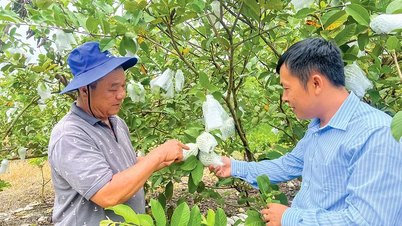



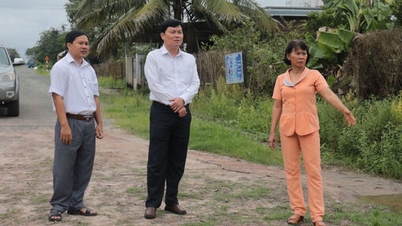



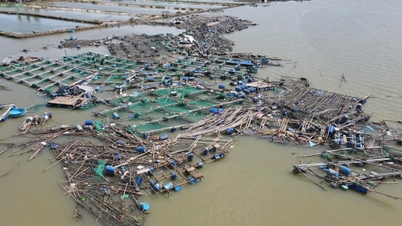
![Dong Nai OCOP transformation: [Article 4] Reaching national standard products](https://vphoto.vietnam.vn/thumb/402x226/vietnam/resource/IMAGE/2025/11/11/1762825820379_4702-cac-san-pham-trai-cay-chung-nhan-ocop-nongnghiep-174649.jpeg)









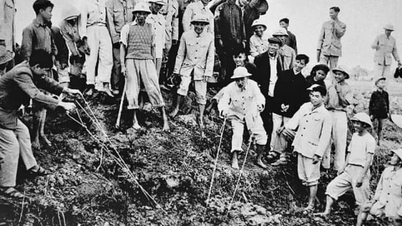
























































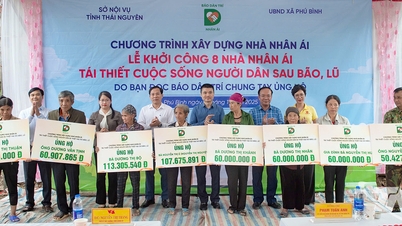










![Dong Nai OCOP transition: [Article 3] Linking tourism with OCOP product consumption](https://vphoto.vietnam.vn/thumb/402x226/vietnam/resource/IMAGE/2025/11/10/1762739199309_1324-2740-7_n-162543_981.jpeg)







Comment (0)